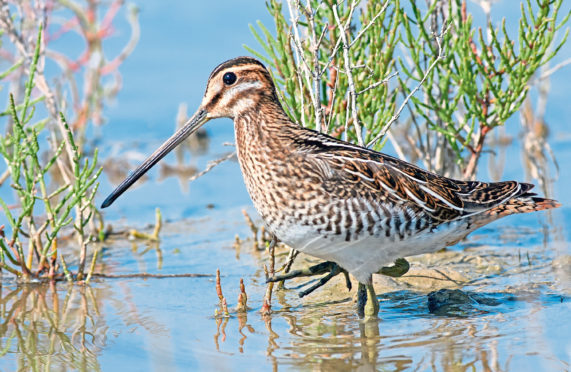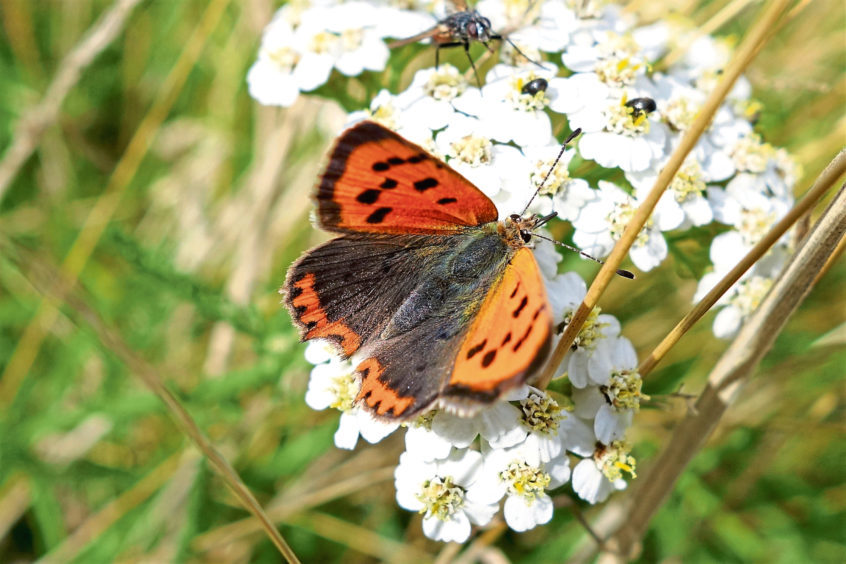Sunshine, showers and a rainbow arching over Strathmiglo; a picture perfect reflection of a Scottish autumn as we sat on the summit of West Lomond following a leisurely hike up from Holl reservoir near Leslie.
This must be one of the finest viewpoints in Fife with an unfolding panorama that stretches down towards the Bass Rock in the outer Firth of Forth and then all the way round to Dundee and beyond. In the other direction lay the Ochils, but they were obscured for the most part by a westerly procession of grey, squally downpours.
It had been an enjoyable walk and on our way to the top, during brief interludes of sunshine, we had glimpsed painted lady and small copper butterflies. This has been an excellent year for butterflies and I don’t recall ever before seeing so many small coppers as I have over the last couple of months. They are such exquisite little creatures, with their intricately patterned orange and brown wings that flash and shimmer in delightful fashion when in flight.
The painted lady, which is larger, is equally attractive and is one of our most remarkable butterflies as they are long distance migrants from the Continent and North Africa. How such a fragile creation can fly so far is beyond my imagination. But this is the end of the road for them, as they won’t survive the approaching Scottish winter.
Skylarks, stonechats and meadow pipits flickered into the air on our ascent, and we also saw several froglets in amongst the tangle of heather and grass on the lower slopes, the showery weather proving ideal for them when on the move.
After a bite of lunch on the top of West Lomond, the cool air began to chill the bones and the rain became tinged with sleet. It was time to go, so we struck down towards the direction of Harperleas reservoir.
The going was rough when suddenly from beneath our feet a snipe exploded into the air and weaved over the wet flushes before spiralling down again. Snipe are the masters of concealment and will sit tight until almost trodden upon. As such, they are elusive and seldom seen waders, favouring boggy ground prolific with rushes or the thick cover afforded by reedy lochside margins.
They are most unusual birds too, with the eyes set far back on the head to enable all round peripheral vision that can detect danger even when the long probing bill is plunged deeply into mud when searching for worms.
But it is in the spring when the snipe stands out from the crowd, for the male makes a most peculiar goat-like bleating sound during courtship as he dives down from high in the sky, with the resultant rush of air through his tail feathers creating a wonderful winnowing resonance. The display is usually termed as ‘drumming’, but bleating is a better comparison, with Robert Burns most appropriately describing the snipe as ‘the blitter frae the boggie’.
Info
The long bill of the snipe has a sensory tip, enabling it to feel for invertebrate prey under the soil. The bill can be opened only at the tip if so desired, thus working like a pair of intricate forceps.

